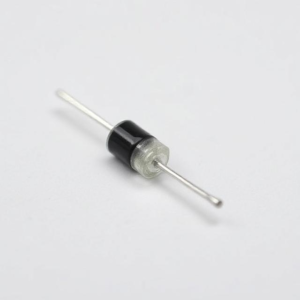Power electronics deals with the conversion and control of electrical power using electronic devices. Among these devices, diodes, thyristors, and triacs play crucial roles. They help in directing, controlling, and regulating the flow of electric current, especially in AC-DC conversion, motor control, and lighting systems.

1. Diodes – One-Way Valves of Electricity
What is a Diode?
A diode is the simplest power semiconductor device. It allows current to flow in only one direction — from the anode to the cathode — and blocks it in the reverse direction.
Working Principle
-
When the diode is forward-biased (positive on the anode), it conducts.
-
When it is reverse-biased (positive on the cathode), it blocks current flow.
Applications in Power Electronics
-
Rectifiers: Diodes convert AC (Alternating Current) to DC (Direct Current) in power supplies.
-
Freewheeling Diodes: Protect circuits from voltage spikes when switching inductive loads like motors.
-
Solar Power Systems: Prevent reverse current flow from batteries to solar panels at night.
Power Diodes vs. Signal Diodes
Power diodes are designed to handle high currents and voltages. They are physically larger and more robust than the small signal diodes used in electronics.
2. Thyristors – Controlled High-Power Switches
What is a Thyristor?
A thyristor, also called an SCR (Silicon Controlled Rectifier), is a four-layer semiconductor device. It works like a diode, but with an added gate terminal that is used to turn it on.
How it Works
-
The thyristor remains off until a small trigger pulse is applied to the gate.
-
Once triggered, it stays on as long as there is a current flowing through it.
-
It turns off only when the current drops below a certain level (zero-crossing).
Applications in Power Electronics
-
AC Voltage Control: Used in light dimmers and speed controllers.
-
Phase-Controlled Rectifiers: Convert AC to variable DC.
-
Power Switching: In industrial motor drives, battery chargers, and HVDC transmission.
Advantages
-
Can handle very high voltages and currents.
-
Highly efficient and reliable for switching large loads.
Limitations
-
Cannot be turned off by the gate (requires natural or forced commutation).
-
Not suitable for high-speed switching.
3. TRIACs – Bidirectional Power Control Devices
What is a TRIAC?
A TRIAC (Triode for Alternating Current) is similar to a thyristor but can conduct in both directions. It is used mainly in AC applications.
How it Works
-
It has three terminals: MT1, MT2, and Gate.
-
A small gate current triggers the device.
-
Once on, it conducts in either direction depending on the polarity of the AC.
Applications
-
Light Dimmers: Commonly used in household lighting systems.
-
Fan Speed Controllers: For controlling ceiling or industrial fans.
-
Heater Controls: Used in temperature control systems.
Advantages
-
Can control AC power directly without additional components.
-
Compact and cost-effective.
Limitations
-
Not suitable for high-frequency or high-power industrial applications.
-
Can produce electrical noise if not properly filtered.
Comparison Table
| Device | Direction | Trigger Method | Main Use |
|---|---|---|---|
| Diode | One-way | None | Rectification, blocking |
| Thyristor | One-way | Gate pulse | High-power switching |
| TRIAC | Two-way | Gate pulse | AC power control (lighting, motors) |
Conclusion
Diodes, thyristors, and TRIACs are essential in the world of power electronics. While diodes offer simple unidirectional control, thyristors enable controlled switching of large power loads. TRIACs extend that control to both halves of an AC cycle, making them perfect for household and commercial power control.
Understanding how these devices work is key to designing safe and efficient power systems — from basic rectifiers to advanced motor drives and lighting controllers.











